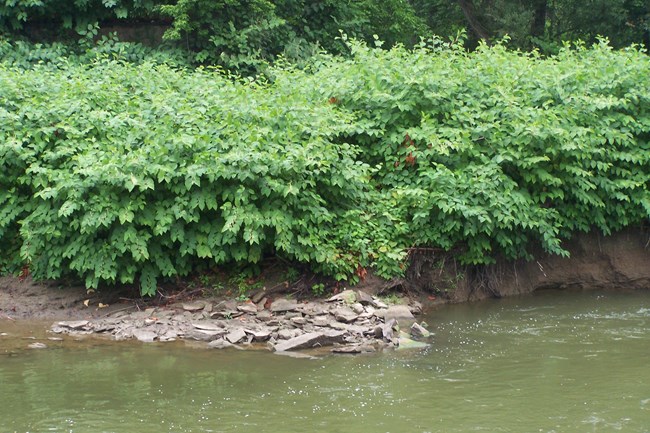
NPS / Arrye Rosser Japanese Knotweed, Polygonum cuspidatumA member of the buckwheat family, knotweed is an upright, shrubby, herbaceous perennial that can grow over 10 feet tall. Infestations range from single plants to large monocultures of more than 500 square yards. Japanese knotweed spreads along river banks as well as wetlands, waste places, and disturbed areas. Because it does not tolerate shade, it occurs mainly in open areas. IdentificationOvate leaves are pointed at the tip and about 6 inches long. Greenish-white flowers occur in sprays during mid-summer and are followed by small fruits. A membranous sheath surrounds the joints of the stem. OriginThis species is native to eastern Asia. It was introduced from Japan to England as an ornamental in 1825 and from there to North America in the late 1800s. How It SpreadsJapanese knotweed reproduces by seed and vegetatively through its root-like rhizomes. Water, wind, and soil disturbances help spread seeds to new areas. Control MethodsIt is usually not appropriate to pull knotweed because the plant can re-sprout from small fragments of its extensive rhizome system. However, single young plants may be hand pulled so long as all roots and runners are removed. For large infestations, glyphosate herbicide may be applied directly to a freshly cut stem or as a 2% solution spray to the leaves and stems. |
Last updated: March 3, 2022
